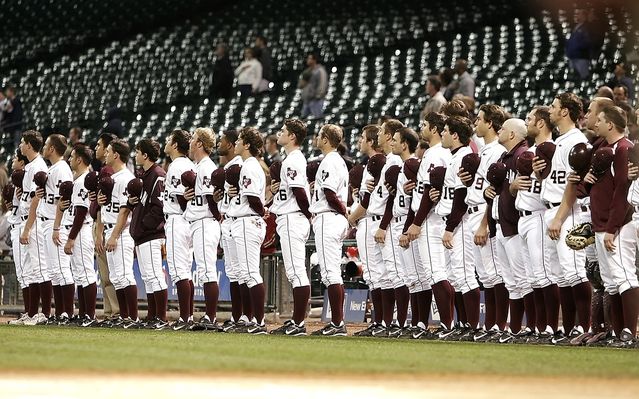Resilience
The Kneeling Anthem Seen as a Ritual "Failure"
The science of ritual offers a different perspective
Posted September 27, 2017
Trump’s response to kneeling
This time last year, a group of NFL players took the field and knelt in solidarity during the pre-game’s National Anthem. As a result, they experienced the wrath of Kate Upton; this season it’s the ire of Donald Trump. From supermodel to POTUS, the controversy appears to have gained some traction.
Trump has been very vocal over the past few days, expressing his moral indignation in response to the players’ behaviors. In usual Trump style, he took to Twitter: “If NFL fans refuse to go to games until players stop disrespecting our Flag and Country, you will see change take place fast. Fire or suspend!”
Then, at a campaign rally for Republican Sen. Luther Strange, Trump called on team owners to fire any “son of a bitch” who “disrespects our flag.” His reaction has sparked a heated debate across America, a controversy that comes with strong opinions from both sides.

It goes without saying, the issue is highly complex and warrants a careful examination. In this post, however, I take a slightly different approach. As a scientist of human behavior, I can’t help but wonder: Why is it so wrong? Why did a seemingly harmless act – choosing to take a knee versus standing – rouse such strong emotional reactions from Upton, Trump and the millions of like-minded Americans? I suspect there’s much more to the story than meets the eye.
The science of collective ritual
The current situation, I believe, can be better understood if we see a national anthem as a type of collective ritual. Research on the psychology and neuroscience of rituals, including my own, has a lot to say on the matter. First off, rituals are great for groups. There’s clear evidence that despite their costliness and effort, rituals carry tremendous positive benefits for groups, from religious believers and frat houses, to sports teams and military units.
They promote successful group cohesion and foster a sense of collective loyalty and solidarity between group members. In history, the most successful groups are those that practice rituals frequently. But they aren’t always good. I have shown in some of my work that rituals can have a series of unintended negative consequences.
Consider, for instance, that a group’s morality is closely tied to the rituals they engage in. The sense of right and wrong (inherently abstract concepts) are brought to life through ritual. Therefore, a “failed” ritual could, in theory, be seen by others as an immoral act: A break from the ritual script is a breach of the moral code.
Breaking the ritual script
Kneeling during the anthem is an example of this ritual “failure.” How so? It all comes down to the inherent features that define ritual, and which separate it from all other forms of group behavior. In particular, the rigidity of rituals translates into strong normative expectations from fellow group members. Many people hold onto the view that you ought to “stick to the script … no matter what.” To some, it’s a moral imperative that the ritual sequence is done correctly – with a sense of duty, honor, and respect.
Simply put, ritual sequences are invariant. The consequences of a ritual mismatch or failure can be dire, especially in social contexts with millions of onlookers, and even more so when the failed ritual is a deeply held tradition cherished by an entire nation.
But does this theorizing stand up to scientific investigation?
An experimental test of ritual failure
My collaborators and I recently took these ideas into the lab. In a series of studies, we examined the underlying psychology of these ritual “failures.” We set out to test the idea that even the slightest mismatches in rituals have negative group outcomes. We brought perfect strangers into the lab and had them perform a joint-coordinated task together as a group. But beforehand we had them engage in a collective ritual. Importantly, we experimentally manipulated (ever so slyly) the level of ritual failure/mismatch between the groups. Group A’s ritual matched up without failure; Group B’s ritual included slight mismatches/failures; and Group C didn’t do a ritual (as a baseline control).
In line with the above theory, we found that people in Group A (ritual “success”) experienced the greatest positive outcomes: They showed the highest levels of group cohesion, they liked each other the most, they reported the greatest amount of shared meaning, and they expected to perform better on the task together. But people in Group B (the ritual “failure”) liked each other less, found the experience less meaningful, and expected they would perform worse together as a team. In fact, the people in Group B were worse off than those Group C folks who had no ritual at all.
But really, why do we stand?
Considering we managed to find these negative group outcomes in a “failed” ritual that was created from scratch in the lab, just imagine the reaction you’d get from a “failed” national anthem ritual. It’s evidence to suggest that many of people have a low tolerance when it comes to accepting variations in a ritual script.
But wherever you side on the issue, one thing is clear. The fact that we stand, with our hands on our chest, and our hats off during the singing of a national anthem is, at the heart of, an arbitrary set of ritualistic actions. It could have easily gone the other way: the fact that the ritual honoring of an anthem doesn’t require us to sit down (or, dare I say, kneel), with our hands on our heads, is a matter of ritual randomness – a series of capricious psychological moments in our history that stuck in our cultural narrative, for whatever reason.

So next time you find yourself at a sporting event, standing dutifully alongside your fellow countrymen for the opening ‘Oh, say, can you see’ (or, for our Canadian kin, ‘Oh, Canada,’), quietly ask yourself the question: Why is it wrong to kneel? But perhaps until we have a better understanding of the situation, and for your own safety, I suggest you stay standing.




